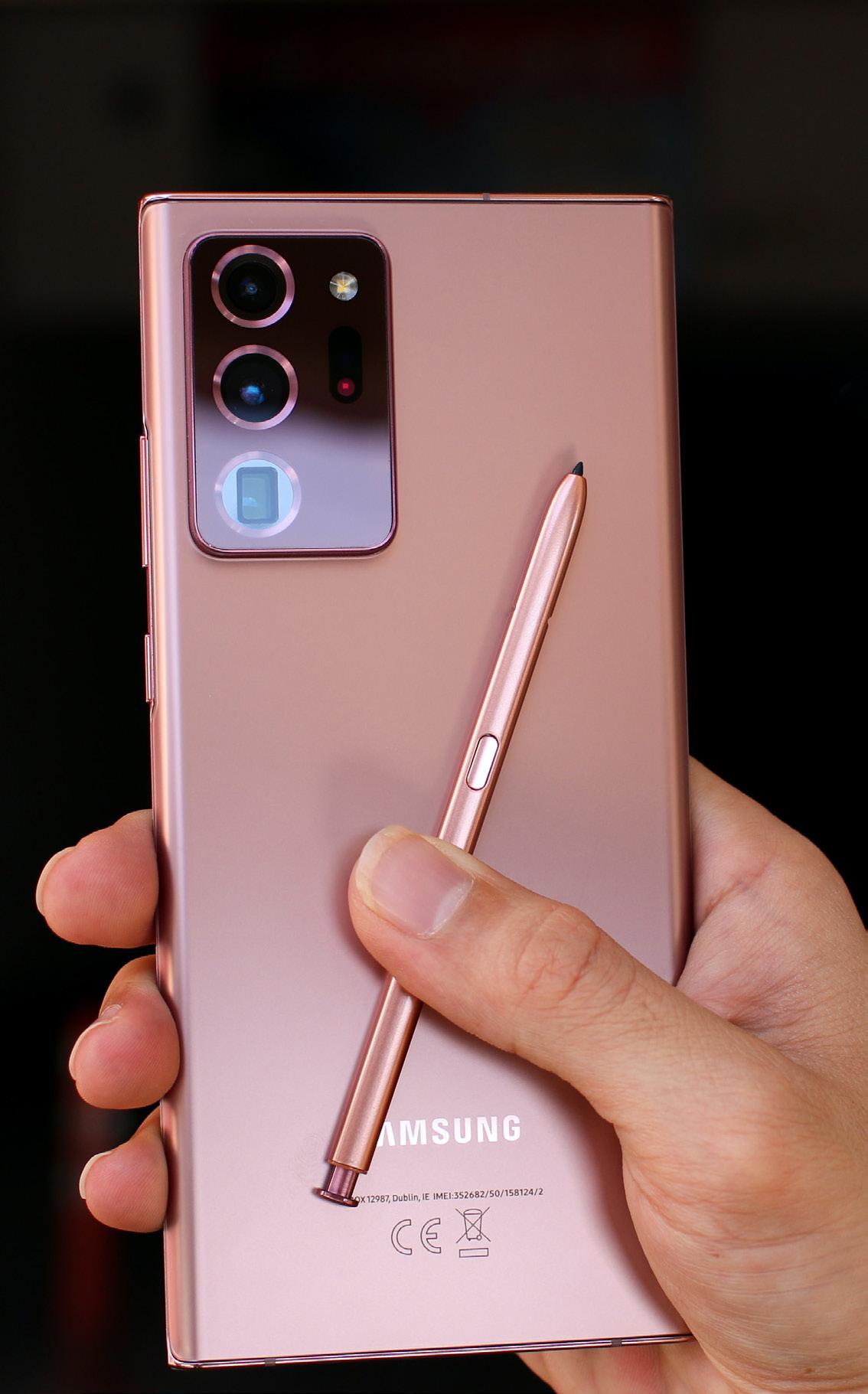
8 minute read
BUSINESS BACKING UP YOUR MOBILE PHONE
BACKING UP YOUR MOBILE PHONE
by Grace Wong
Advertisement
I’ve fixed my fair share of phones over the years and if there’s one thing I’ve noticed is that people don’t tend to back up their devices and regret it greatly when their phone craps out. I’ve received more calls than I can count from people frantic to get the photos of their kids or their parents or their pets off their device after it dies or a passcode is forgotten.
A lot it has to do with the fact that we simply don’t think about it – it’ll never happen to me. Unfortunately, it can and does happen at the least opportune times, so I’m here to explain how to back up your phone and hopefully if anything untoward ever happens, you’re covered.
There are two ways to back up an iPhone:
a. using iCloud. That means needing to purchase additional space from Apple. The larger the storage in your phone, the more space you need to purchase.
b. using iTunes. That means remembering to plug your phone into your Mac or Windows computer on a daily or weekly basis.
c. use third party cloud storage solutions such as
Dropbox or One Drive if you’ve already got them in your arsenal.
IPhone
ICloud
Backing up to iCloud is a fairly simple process:
1. Go to Settings > [your name] > iCloud > iCloud
Backup.
2. Turn on iCloud Backup. iCloud automatically backs up your iPhone daily when iPhone is connected to power, locked, and on Wi-Fi.
3. To perform a manual backup, tap Back Up Now.
To view your iCloud backups, go to Settings > [your name] > iCloud > Manage Storage > Backups. To delete a backup, choose a backup from the list, then tap Delete Backup.
ITunes
Backing up using iTunes requires a little more equipment and hard drive space. Of course, one of the advantages of using iTunes is you can choose to store backups over a certain amount of time so you can go back to backups from months previous. This is done as follows:
1. On a Windows computer, connect iPhone to your computer with a cable. 2. In the iTunes app on your PC, click the iPhone button near the top left of the iTunes window. 3. Click Summary. 4. Click Back Up Now (below Backups). 5. To encrypt your backups, select “Encrypt local backup,” type a password, then click Set Password
To see the backups stored on your computer, choose Edit > Preferences, then click Devices. Encrypted backups have a lock icon in the list of backups.
1. On a Mac, connect your iPhone to your computer with a cable. 2. In the Finder sidebar on your Mac, select your iPhone. 3. At the top of the Finder window, click General. 4. Select “Back up all of the data on your iPhone to this
Mac.” 5. To encrypt your backup data and protect it with a password, select “Encrypt local backup.” 6. Click Back Up Now.
Third Party
If you’re already paying for a cloud storage solution such as Dropbox, you can back up your phone that way too, although it does require a bit more knowledge of file structure and such.
For Windows: 1. Open the Start menu and then open File Explorer 2. Click “This PC” from the left-side menu 3. Double-click on your computer’s hard drive, generally labeled “Local Disk (C:)” 4. Under “Show/hide” in the “View” tab at the top of the File Explorer window, tick the box for “Hidden items” 5. Open the “Users” folder within your hard drive’s folder. 6. You’ll see a list of users who have access to your computer. Select the folder for your account. If you haven’t set your own account name, this will likely be called “Admin” 7. In your user folder, you should see a folder called
“app data.” Open that, then click through the following folders: a.Roaming b.Apple Computer c. Mobile Sync d.Backup
8. Once you’re in the “Backup” folder, make sure it’s arranged into chronological order, so that your most recent backup will be the first file on the list.
9. Open your Dropbox files either on your browser or via the Desktop client. 10. Drag the most recent backup folder into your Dropbox window and wait for it to upload.
For Mac: 1. Open Finder, and from the top menu bar, select Go With the Go drop-down menu open, hold down the Option key and you’ll notice a Library folder appear in the menu.
2. Open the Library folder and then click through the following folders: a. Application Support b. Mobile Sync c. Backup
4. From here, the process is pretty much the same as on Windows. Locate your most recent backup folder, drag it into your Dropbox window, and wait for the upload to complete.


Android
Even though Android is an open-source operating system, the version of Android found on mobile phones is commercially sponsored by Google. As such, the software suite used for backups primarily consists of Google Photo, Google Drive, SMS Backup & Restore and Google Contacts and are all cloud based, these can all be downloaded for free from the Google Play Store.
Backing Up Photos: 1. Open Google Photos. 2. Sign into your Google account. 3. Choose your desired quality settings. 4. Wait for your photos to sync.
While Google Photos is free to use, unlimited free backups of pictures are saved in what Google calls “high quality.” This is a lower-resolution file of your photos, and while they’ll still look good, won’t be quite as sharp as the original file.
If you want to back up your pictures in their full original resolution, this will count against your overall Google One storage space (see more below).
Backing Up Text Messages
If you use a messaging app like Facebook Messenger or Telegram, accessing your messages on your new phone is as easy as logging into your account. However, if you still rely on good old-fashioned SMS text messaging, things are a bit more complicated.
You’ll need to download an SMS backup app from the Play Store to save a backup of all your texts. I recommend the free app SMS Backup & Restore.
1. Open SMS Backup & Restore on your phone. 2. Tap Get Started. 3. Tap Set Up a Backup.
From here, you can backup not just text messages, but any phone call history you have, too.
Backing Up Files
Okay, so you’ve got your pictures backed up, but what about all of your other files? That’s where Google Drive comes into play. Google Drive is a cloud storage app, allowing you to keep all of your word documents, presentations, PDFs, and other file types safe and secure off of your phone’s local storage.
1. Open Google Drive on your phone. 2. Tap the + icon in the bottom-right corner. 3. Tap Upload. 4. Select the files you want to upload.
All Google Drive users get 15GB of free storage to use right out of the gate, but if you need more, you’ll need to pay a monthly fee. Extra Drive storage is sold through Google One, with plans starting at $1.99/month for 100GB. There are a bunch of tiers offered, including 200GB, 2TB, 10TB, 20TB, and even 30TB.
Backing Up Contacts
Something else you’ll want to make sure is backed up is all of your contacts. For this, I recommend using Google Contacts.
Devices like the Google Pixel 5 and the Motorola Moto G Power come with Google Contacts pre-installed, but if you have a phone from OnePlus, Samsung, or LG, chances are you’re using a contacts app made by that manufacturer. Download Google Contacts, log into your Google account and all of your contacts will be synced automatically. If you need to dig a bit deeper, Google Contacts also offers tools for importing, exporting, and restoring contact files. 1. Open Google Contacts on your phone. 2. Tap the menu button at the top-left. 3. Tap Settings.
From here, you can import a .vcf file, export contacts from a Google account and restore contacts you’ve saved to your account. Backing Up Apps
Moving right along, you’ll also want to make sure all of your applications are backed up.
Backing up apps used to be a pain in the butt, but these days, Google keeps an automatic backup for you on your account. As such, downloading your apps and all of their data is as easy as diving into the settings on your phone, making sure the toggle is turned on and selecting the backup option.
1. Open Settings on your phone. 2. Tap System. 3. Tap Backup. The Samsung Smart Switch app is designed for transferring data from an old phone to a new one more than as a backup app but is still worth using if you have a Samsung phone.
Smart Switch can be used to transfer just about everything, including: • Call history • Contacts • Calendar data • Text messages • Images, media, and other files
Getting started with Smart Switch on your old phone is pretty simple. After downloading the app from the Play Store, follow the following on-screen prompts:
1. Open Smart Switch on your old phone. 2. Tap Agree. 3. Tap Allow. 4. Tap Let’s Go. 5. Tap Cable or Wireless depending on which method you want to use. 6. Open Smart Switch on your new phone and follow these same prompts. 7. Start the transfer. Probably the most intimidating part about backing up your phone is how complicated it all seems, but with the proper instructions it can be done fairly painlessly and once done, you’ll feel so much better, knowing that your data is safe and sound.


With 23-years-experience in computer and mobile device repairs, Grace Wong has owned Apex Computer & Mobile Repairs for five years. She lives and works in Sherwood Park with her husband and 16-yearold son who she adores to the moon and back.










